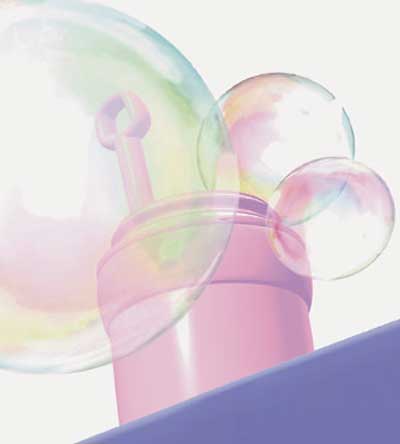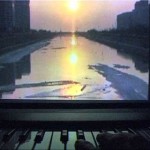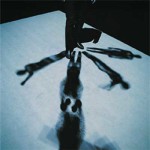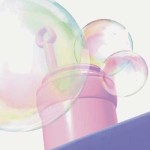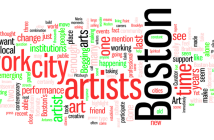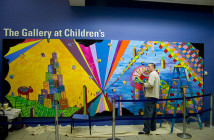There was little interest in this show during its first few weeks up. One might guess that it was because it was billed simply as New Media Art from Finland. I am personally, as I believe most of my equals to be, just as likely to go to a show that’s called “New Media Art from Florida” as I am a show with art from Finland. “Why Finland?” we ask in the same way that we (Bostonians, residents of the United States) might ask why the Dominican Republic? Is the curator, Heather Kapplow, a Finn? Is she a big fan of Nokia or Linux, or perhaps even saunas? What is art like from the least popular and most ‘foreign’ of the Scandinavian, or Nordic, countries? Why should we pay it any attention over art from Boston or London or New York? We, in our colonialist mindsets, expect that any exhibition, from outside of our own cultural or geo-political spaces, was brought to us as an exposé of that “external” culture—what about that culture can we understand from the cultural productions that were placed together in the exhibition?
Kapplow brought this work from Finland as she thought it resembled Boston work, but in my opinion the Finnish work is actually better (It may be true that Boston Cyber Arts Festival director, George Fifield remarked that this was the “crown jewel” of the fest. Perhaps he’ll be reaching farther beyond New England for the 2007 fest.). At the 2002 Venice Biennial, she came across some work from the Finnish artist association AV-Arkki of which these artists are from, and has programmed works from the association within a couple of her shows since; but she sought to “create a stronger, more visceral connection between Boston and the Helsinki artists” and so put together this show during the Cyber Arts Festival.
Kapplow writes about how the works “explore the notion of interface,” the interface for communication and expression They allow the viewer or ‘user’ to interact with the work, and so, indirectly, the artist—each work allowing for a new mode of expression and interaction “beyond prescribed virtualities.” But the artists have also created devices that suffice as self-contained interactors or interlocutors—they provide all the feedback we the viewer, participant, or user need to have experience, or be given it. The communication, beyond our own self discovery, seems only to immediately exist between the users and the machines the artists have created.
White Square, by Hanna Haaslahti, hidden behind the thick black curtains hung floor to ceiling in the gallery, is indeed a white square—a projection of white light from above. When I strode into the light, my shadow cast down hard on the dark grey rug under my feet, several duplicate figures, seemingly translucent, male, ghostly, began dancing around my feet in the projection. When another ‘user’ stepped into the light, more figures appeared, circling around their feet. When users approach each other, the beings reach out and touch each other and meld into one shape. The faster I moved, the faster the beings moved, when I stopped they stopped, sometimes floating off into the open spaces of the projection. It was as though I had playmate or dance partner, it was beautiful and playful. The technology of the piece is hidden in the dark; the only media I was aware of was light and whatever movement I wished to add to the piece.
Minna Långström’s Kupla (The Bubble) is a re-sensitization installation. The walls are baby-blue, and an oversized baby-blue chair is parked on the side of a baby blue rug; large enough to make me seem two feet again. A nursery rhyme-like music provides a soothing soundtrack, and a video projector throws pastel colored light on the rear wall of the installation. Everything is cool and soft as though I am home in the safety of a nursery. An oversized bubble blowing canister and wand sit on the oversized chair and when a user blows into the bubble wand, a sensor causes bubbles to appear on the video screen. Some of the bubbles carry inside them washed out video of assassinations, explosions and contemporary and stock footage of violent conflicts. As if the projection is from a news channel, text constantly moves left to right on the bottom of the screen giving the name and source of the video, which was always downloaded from the internet. A candy-like, cartoon-ish head hangs from the ceiling in the installation, a rope dangling beneath it. When the rope is pulled, the soundtrack for footage of violence blares from a hidden speaker. The sounds and images of violence, even though much lower resolution than television and the images quite common to us, is incredibly unsettling. Långström’s work functions to lower our threshold for violence and reverse the de-sensitization we’ve grown up with.
Simo Rouhiainen was the least inspiring of the three pieces in the show, though his work was still strong. Least inspiring because it left me with the least to think about, though perhaps only because the other works overcrowded my memory and senses. A midi-keyboard sits in front of a video projection. Each key on the key-board corresponds to a different moving image in the projection, each a blurry urban image from Helsinki or St. Petersburg. Rouhiainen also provided a set of headphones with electronic music from Tapani Rinne & New Composers playing endlessly. While wearing the headphones, the user can play along with the music, switching the images with each different keystroke, the images only moving when the keys were depressed. Some of the keys (unfortunately only a few random keys) could be simultaneous depressed to create layered images. In the end this was for me only a quick and easy way to make a music video. It was an expensive toy from the 1980’s, but the images one could create were beautiful and the interface was simple, intuitive and addictive.
I am unable put this work from Finland into any kind of system reflective of its ostensible hierarchical placement in the art world. Some of the most innovative New Media Art in North America comes out of the Boston area, and I attribute this to Boston’s high concentration of technologically proficient institutions and the thousands of people who make those institutions what they are. However, a lot of the work, though technically profound, lacks much of what we look for in art itself. The work relies on its technology so much in order to warrant our appreciation of it, it fails again and again. More often than in other mediums, New Media art is curated together in shows with other works solely because they are of the same medium—their technical mastery is their predominant and parallel aspect. This is unabashedly the case in Kapplow’s Studio Soto show, as its title illustrates. However, the work really has little to do with the medium—the artists merely used the technology of new media to articulate great ideas. This may be the most unselfconsciously New Media “New Media” show I have ever seen.
- Simo Rouhiainen, Mir, interactive installation, 2003.
- Hanna Haaslahti, White Square, an interactive installation.
- Minna Långström, Kupla (the Bubble), interactive installation.
Links:
Studio Soto
"New Media Art From Finland" was on view until May 15, 2005 at Studio Soto, located at 63 Drydock Ave. in Fort Point, Boston.
All images are courtesy of the artists and Studio Soto.

